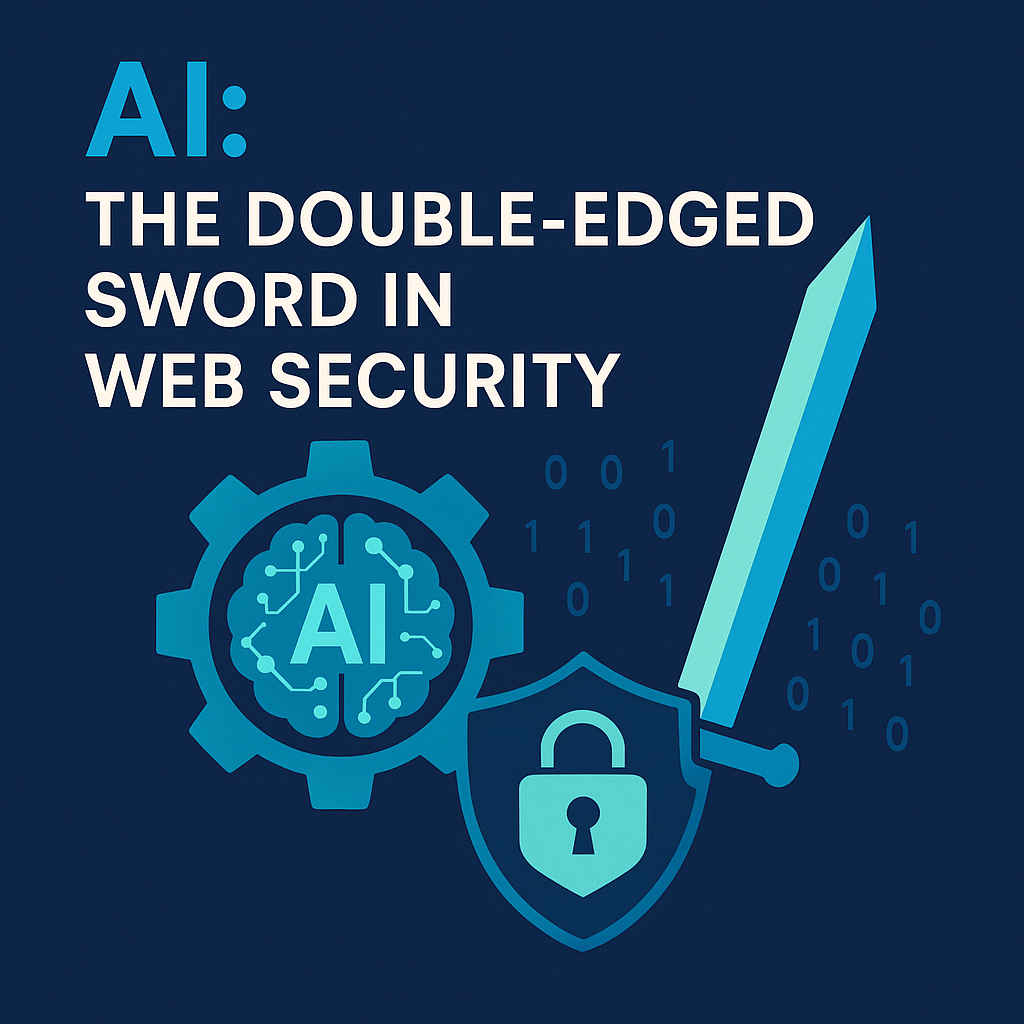
Artificial intelligence is changing the face of cybersecurity – both for defenders and attackers. On one hand, AI tools help businesses spot threats faster and automate defenses. On the other hand, cybercriminals are exploiting the same technology to craft more convincing scams and malware.
It’s become clear that AI is a double-edged sword in today’s web security landscape. In fact, industry experts note that “cybersecurity concerns in 2024 can be summed up in two letters: AI”, reflecting how central this technology has become.
This article breaks down how AI is being used for security, how it’s abused by bad actors, and what practical steps you can take to stay safe in an AI-driven world.
How AI Helps Keep Us Secure
Security teams now use artificial intelligence to detect threats faster and more accurately. Machine learning algorithms can sift through logs and network data to flag unusual behavior in real time. AI-driven tools also help automate routine defenses: isolating malware, scanning emails, or detecting account abuse.
In a global survey by the World Economic Forum, 66% of organizations viewed AI as the biggest game-changer in cybersecurity. But only 37% had safeguards in place to vet these tools before deployment. That means many are embracing AI without managing its risks.
For small businesses, the lesson is simple: use AI tools wisely. If you rely on machine learning to filter threats or streamline workflows, ensure that it’s configured, monitored, and governed properly. The goal is to let AI reduce the workload—not replace caution or oversight.
How Cybercriminals Abuse AI
Attackers are using the same tools to make their scams smarter. Since ChatGPT’s release in 2022, AI-assisted scams have quadrupled. This includes phishing, deepfake videos, cloned websites, and more.
One high-profile case involved a finance staffer tricked into a $25 million transfer after a fake video call with AI-generated executives. Another scam cloned a legitimate e-commerce site and lured customers into paying fake shipping fees. Over 100 people fell for the trick before it was exposed.
Even phishing has evolved. A 2025 study showed that AI-generated phishing emails had a 54% click-through rate—much higher than human-written scams. And attackers now use voice cloning from just seconds of audio to impersonate people in real time, a practice known as “vishing.”
The barrier to entry has also dropped. Novices can use AI coding assistants to write malware or scan for vulnerabilities. HP’s research team confirmed real-world malware partially generated by AI, and security firms have warned that anyone with access to AI tools can now impersonate brands and trick users at scale.
Staying Safe in an AI-Driven Threat Landscape
Small business owners often don’t have time to stay ahead of these threats. But you can still reduce risk by following simple practices:
- Keep software up to date — Many attacks rely on known vulnerabilities. Apply patches and follow basic digital hygiene.
- Verify unusual requests — If something feels off, check via a different method. Don’t trust video calls or emails at face value.
- Train your team — Teach staff to spot phishing, deepfakes, and strange behaviors. Use real cases to make it relatable.
- Use Multi-Factor Authentication (MFA) — It adds a layer that phished passwords alone can’t bypass.
- Choose security tools carefully — Modern AI tools can detect patterns in scams, but only if they’re set up right.
Don’t hesitate to ask for help. Our Website Security Audit & Support services include routine check-ups and advice to help prevent attacks before they happen. Even a single misconfiguration can open a door to AI-enhanced threats.
Conclusion
AI is reshaping cybersecurity. It helps defenders, but also gives attackers new powers. Businesses that succeed will be those who balance the tools and threats, stay informed, and act early. With the right steps, you can protect your work, no hype, just smart defense.
Related reading: The Basics of Digital Hygiene | More blog posts coming soon.

Leave a Reply